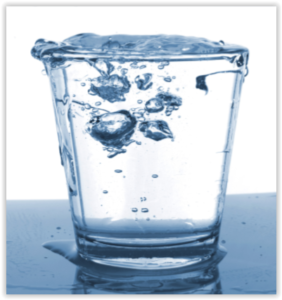Poison in the Water
THE DANGERS OF LEAD PIPES AND DRINKING WATER
 For many years, lead was used in many readily available materials including paint, gasoline, household plumbing, and municipal water lines — all despite evidence of its dangers being known in the United States as early as 1845.
For many years, lead was used in many readily available materials including paint, gasoline, household plumbing, and municipal water lines — all despite evidence of its dangers being known in the United States as early as 1845.
One of the most dangerous realities of lead poisoning is how hard it is to detect. Even in high levels, symptoms of lead poisoning — vomiting, weight loss, abdominal pain, and fatigue — may not appear until a person is suffering from near-fatal amounts of exposure. But its effects are dangerous and long-lasting.
Even in small doses, lead exposure can damage the brain and nervous system, slowing development and leading to hearing, speech, and learning problems. Children, specifically those six and under, are at the greatest risk. Lead exposure can lower a child’s IQ, diminishing their ability to pay attention.
The Environmental Protection Agency reports over 20 percent of lead exposure cases are the result of contaminated drinking water. Infants drinking mixed formulas can receive 40 to 60 percent of exposure through the drinking water used in their bottles. It wasn’t until the Safe Drinking Water Act Amendments of 1986 went into effect that major steps were taken in protecting people from this danger. Only lead-free pipe, solder, or flux can be used when constructing or repairing plumbing used for public, residential, or commercial buildings. New construction materials were used and countless water pipes were voluntarily replaced by building owners and managers nationwide.
In spite of the Safe Drinking Water Act, recent hazards regarding lead exposed drinking water arose in Flint, Michigan. There is little that anyone — outside of the Flint Water Department — could do. When Flint changed its water source from water treated by Detroit Water and Sewerage Department to the Flint River, city officials had failed to apply corrosion inhibitors. Water from the Flint River corroded aging pipes, releasing lead into the drinking water. It created a public health state of emergency, one that Flint is still struggling to recover from.
Save for such rare incidents, lead exposure is not a major concern for occupants in residential or commercial buildings built after 1986. If you live in a home or work in a building constructed before 1986, it is important to check the quality of your pipes and drinking water. Commercial building owners and managers need to know if their building is at risk and understand the methods to manage that risk. Testing the water at delivery sources can provide that much needed data, and can serve as another layer of due diligence for future tenant concerns.
